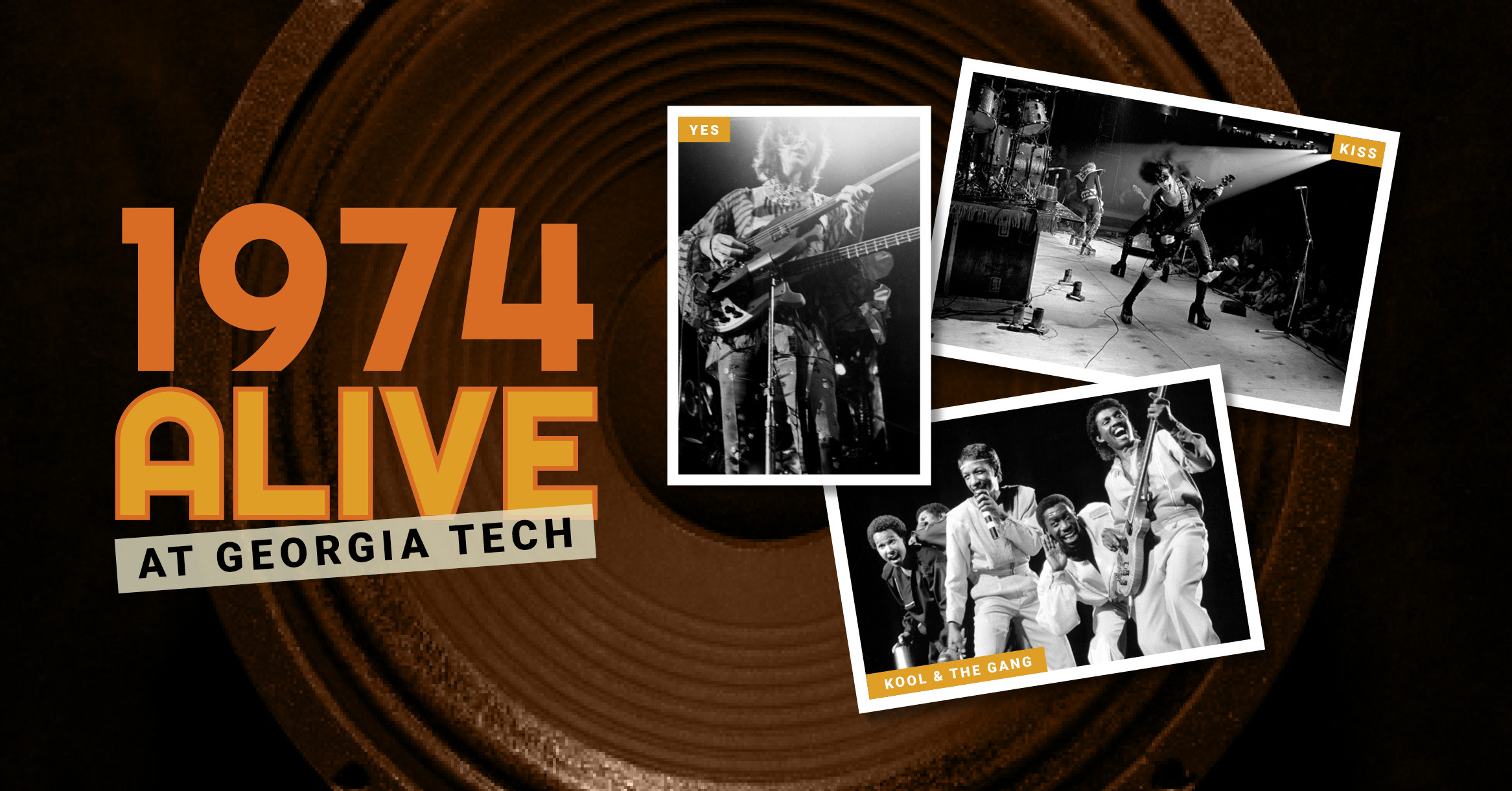
Fifty years ago, Georgia Tech hosted 11 live music shows by national acts, including eight eventual Rock & Roll Hall of Fame inductees. Press play on our 1974 playlists on Spotify, YouTube, or Apple Music, and follow a trail of historic press clips, photos, and firsthand accounts from these concerts — for thousands of local music fans, often their first, or only, encounter with Georgia Tech.

1974 was not the first year Georgia Tech held concerts on campus, and certainly not the last, but it’s arguably the most historic.
A remarkable nine-month stretch 50 years ago included Chicago; the Doobie Brothers; Earth, Wind & Fire; Kool & The Gang; Lynyrd Skynyrd; Traffic; and Yes — and arena rockers KISS were a show-stealing, opening act here.
The steel dome, open floor, and 8,600-person capacity made the Alexander Memorial Coliseum (since renovated and renamed the Hank McCamish Pavilion) one of Atlanta’s largest indoor venues before The Omni opened downtown in 1972. As with many mid-20th-century arenas, Tech’s Coliseum had no air conditioning, and all tickets were general admission “festival seating.” When the gates opened, attendees rushed for the best standing spaces or seats and often stayed put through the encore.
The Walrus, an alternative newspaper out of the University of Illinois, dubbed the Coliseum the “world’s largest echo chamber” in 1974. “It was loud, but no one there was worried about sound quality — we were there to have a good time,” recalled David Dean, who traveled with his brother from South Georgia to the Tech campus in November 1974 to see Black Oak Arkansas, fronted by the wild, flamboyant Jim “Dandy” Mangrum.

While a 19-year-old student at Valdosta State University, Dean learned about the show in Atlanta from columnist Scott Cain of the Atlanta Constitution. Long before bands announced tours on social media or apps, fans pored over concert listings and ads in city newspapers, university papers like The Technique, and independent, countercultural media such as Creative Loafing and The Great Speckled Bird. Buying tickets meant lining up early at venue box offices or record stores such as Mother’s Music and Peaches Records.
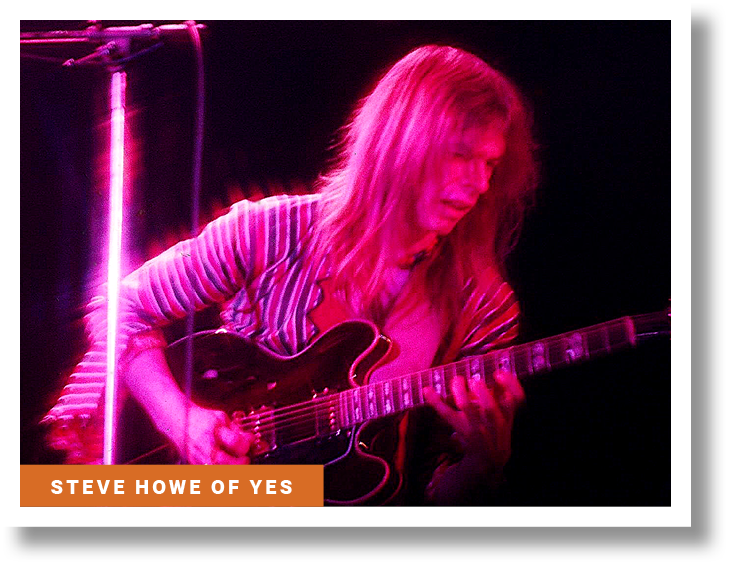

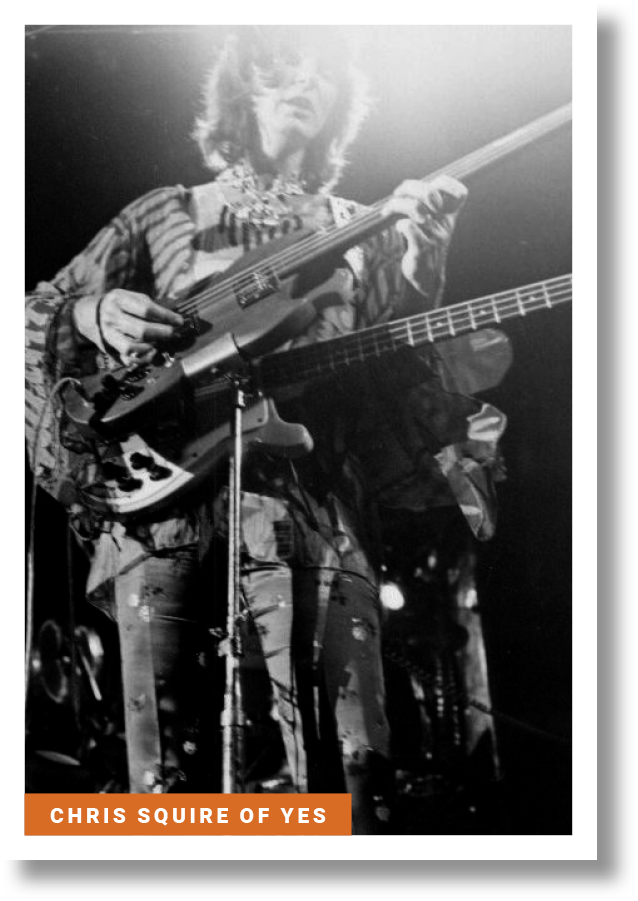
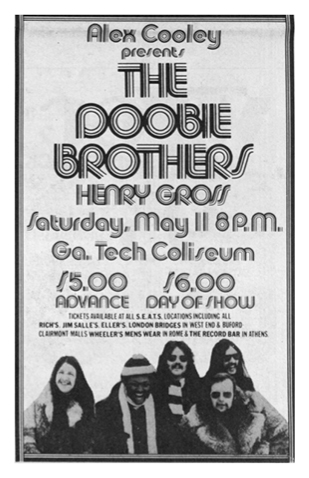
Tech students paid $5.50 (about $34.50 in 2024 dollars) to see progressive rock band Yes, the first act in the 1974 run of shows. Sponsored by the Georgia Tech Concert Committee (a precursor to today’s Student Center Programs Council), the Yes concert was advertised in The Technique, and to the broader community in alternative papers.
Self-described “rock and roll band with horns” Chicago, Motown-rock blenders Rare Earth (with Kool & The Gang), and English rockers Traffic headlined shows in March and April.
Ned Barbre of Woodstock, Georgia, attended three shows at Tech in ‘74, including Traffic, the Doobie Brothers, and Skynyrd. “First time I’d ever been to the Alexander Coliseum was to see those shows, so I didn’t know what to expect,” he said, fondly recalling the experience of buying tickets. “Standing in line at the record store was a party in itself, meeting a bunch of people with similar interests.”
Philip Auslander, professor of popular music history and performance studies in the School of Literature, Media, and Communication, shared his perspective on this run. “The programming during this year was very coherent, and covered a lot of the era’s musical ground,” he said. “How come we don’t have concerts like these at Georgia Tech anymore?”


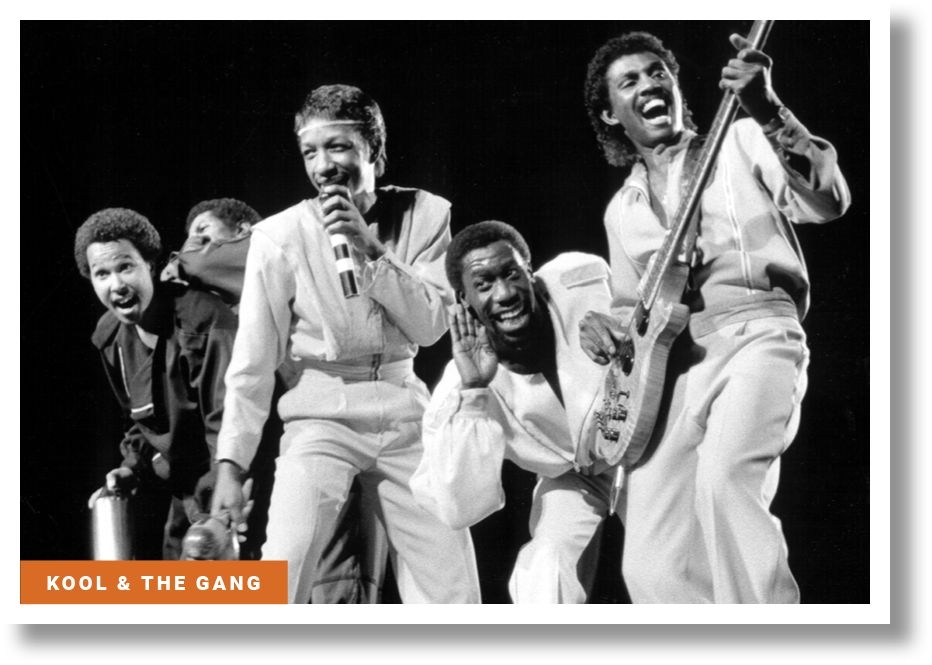

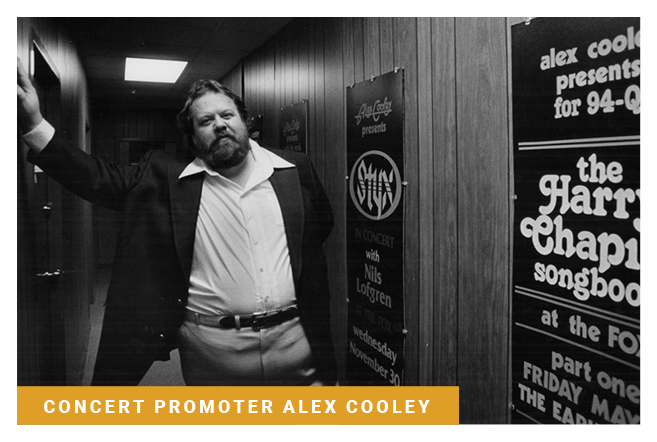
Larger-market concert promoters — including Los Angeles-based Concerts West and New York-based Howard Stein — brought some national acts to Tech. But the person most responsible for connecting the campus to classic rock was “the unofficial mayor of Atlanta music,” Alex Cooley. He briefly attended Georgia State University and the University of Georgia on his path to becoming one of the most notable promoters in the Southeast, starting with the Atlanta International Pop Festival in 1969. His company began contracting with major performers for Atlanta venues in 1970, and in March 1974, Alex Cooley’s Electric Ballroom venue opened at the Georgian Terrace Hotel on Peachtree Street.
The last month of the spring semester included several Cooley Inc.-promoted performances at what local ads called the “Ga. Tech Coliseum.” Hard rockers Blue Öyster Cult, Manfred Mann’s Earth Band, and Georgia-based, southern rock band Hydra played May 4. Kool & The Gang returned on May 5 as a top-billed act, delivering an R&B showcase with Eddie Kendricks and the Bar-Kays. The Doobie Brothers performed top-40 hits like China Grove and Listen to the Music on May 11, at the peak of their popularity. Earth, Wind & Fire rounded out the May shows, along with comedian Richard Pryor and psychedelic soul group the Chambers Brothers.
Augusta, Georgia, native Ken Smith attended Georgia Tech on an athletics scholarship and experienced the Yes, Chicago, and Doobie Brothers shows during this time. “The Doobies show was on the day of, or after, the spring football game. I remember a lot of pyrotechnics and a great show,” he said.
The end of the school year came with a pause for shows at Alexander Memorial Coliseum, but the music scene a few blocks from campus stayed hotter than the weather. Summer nights at Alex Cooley’s Electric Ballroom included Aerosmith, Kansas, Rush, Rory Gallagher, and a brand-new foursome from New York, clad in leather, platform boots, and face makeup, called KISS. “They were almost like our house band in ‘74. Atlanta audiences took to KISS very early, and they became one of Atlanta’s favorite bands,” Cooley recalled in Nothin’ to Lose: The Making of KISS, 1972-1975.
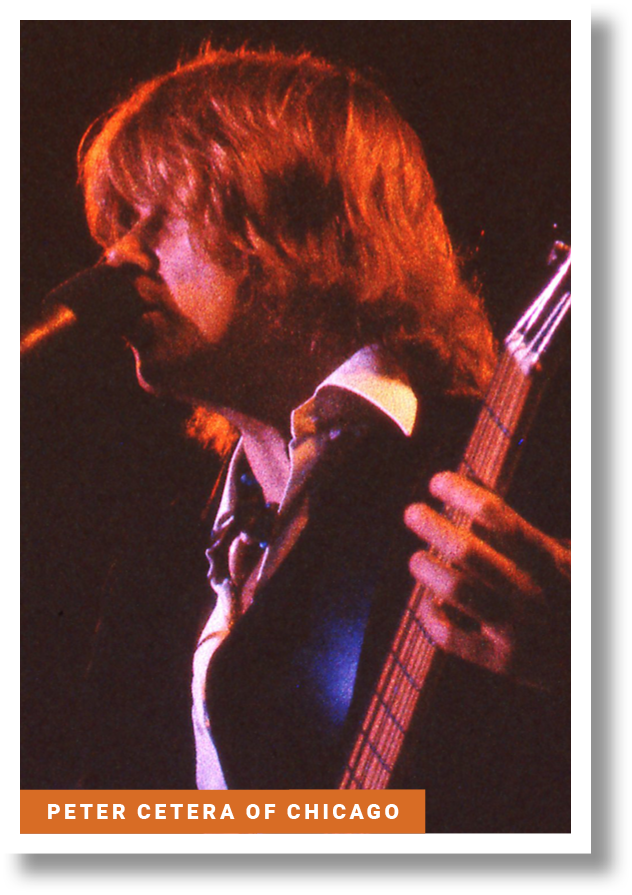

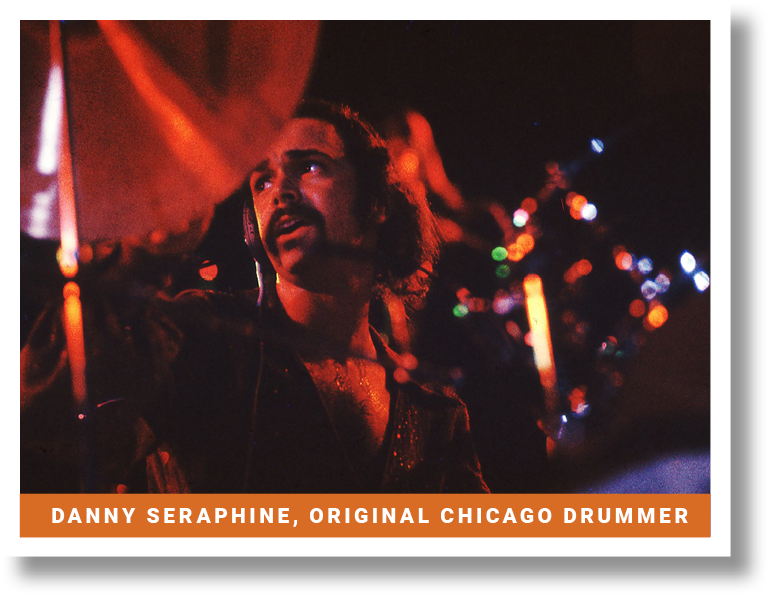

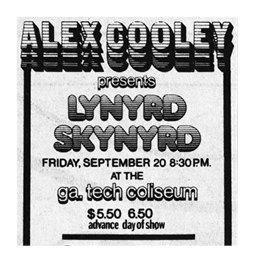
Shortly after the fall semester started, fans packed the Coliseum for Lynyrd Skynyrd, REO Speedwagon, and Hydra. Touring on the strength of their massive sophomore album Second Helping, the Florida band moved from opening for the Allman Brothers Band in June 1974 to the lead act in just a few months, with Cooley’s fervent backing. Just a year prior, the group opened for Little Feat at Landis Field, near the current location of the Ken Byers Tennis Complex. That September, the crowd was there for Skynyrd.
Attendee Ned Barbre recalled the scene as he and fellow fans waited outside the gates, “There was a long line to get into the Coliseum, and all the people waiting in line rushed in at the same time. I remember everybody just having a really good time, in anticipation of the bands coming out to play. It was over the top.”
The Georgia Tech show was cited in a story of Lynyrd Skynyrd’s rise to fame in the Oct. 24, 1974, issue of Rolling Stone magazine. Author Tom Dupree described the crowd’s response to the song Sweet Home Alabama: “The electricity almost became visible, and the entire Coliseum exploded in a triumphant roar,” he wrote.
Folk/pop duo Seals and Crofts brought their Summer Breeze through campus on Nov. 16. The following week, Jim Dandy and Black Oak Arkansas were billed as headliners for the final show at Alexander Memorial Coliseum — but coverage by the Atlanta Journal and Creative Loafing led with the opening act.

Teenagers David and Bill Dean (along with much of the crowd) were shocked and thrilled by openers KISS, who returned to Atlanta after releasing their second LP of 1974, Hotter Than Hell. “These Kabuki-ed, demon gargoyles assaulted our senses,” said David Dean, who became a lifelong fan on the spot.
KISS bassist Gene Simmons recalled in the band’s autobiography, “Black Oak had this theatrical curtain behind them. I spit fire, but that night — it was 10 feet high and it accidentally caught their curtain on fire.” A series of rare images by photographer Tom Hill captured the early-era energy of the New York rockers on stage.
Auslander, author of Performing Glam Rock: Gender and Theatricality in Popular Music (2006), noted, “It’s interesting that KISS was lumped in as a glam act. They certainly had a different take on glam than what was happening in the U.K. They’ve had an enormous legacy — any big-ticket concert like Taylor Swift and Beyoncé is now an intensely theatrical event — well beyond what one might consider a concert to be. I think KISS, along with David Bowie and others, deserves some of the credit for the move toward theatricality and self-awareness of persona in the performance of popular music across multiple genres.”
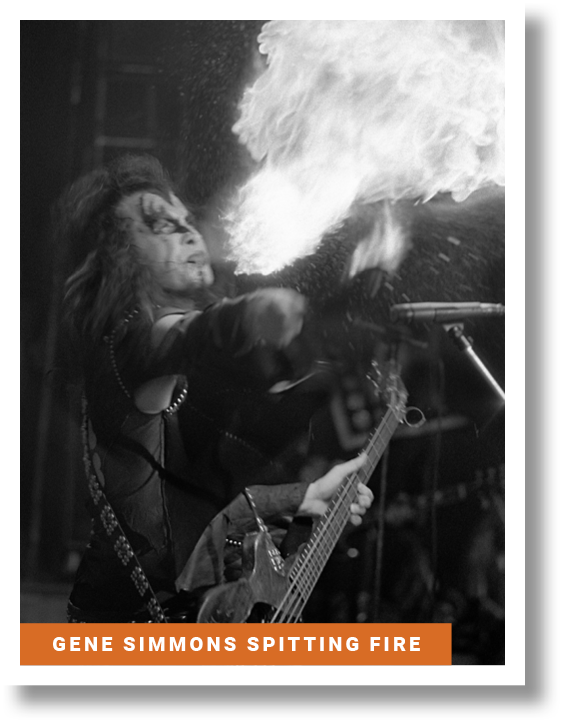
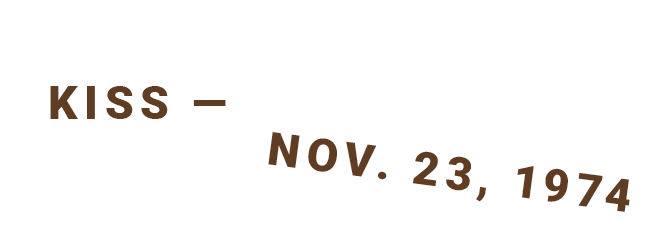
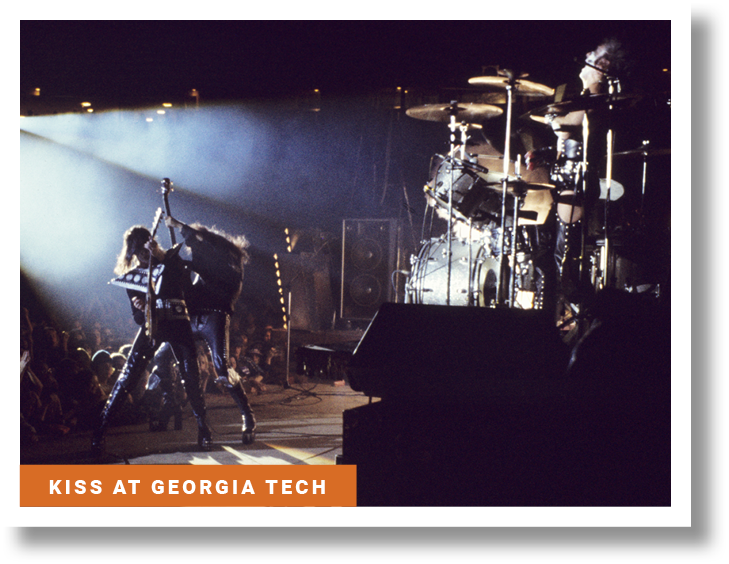

Nine months after the sold-out show at Tech, Yes played at The Omni Nov. 30 for more than 16,000 fans. The next night, rock icon David Bowie performed the final show of his Diamond Dogs tour at the same arena — and within a year of their Fall 1974 shows, KISS and Lynyrd Skynyrd would each return to Atlanta as headliners at The Omni.
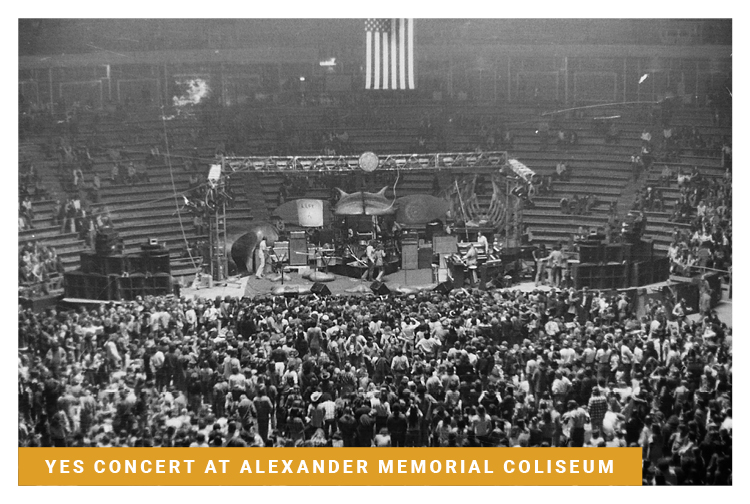
Throughout the 1970s, Tech would continue to host many of the decade’s most prominent bands and artists at Alexander Memorial Coliseum and Bobby Dodd Stadium. The Dog Day Afternoon festival in 1977 and Alex Cooley’s Champagne Jam concerts in 1978 and 1979 brought massive, sweaty crowds of music fans to campus for acts including Atlanta Rhythm Section, Bob Seger, Cheap Trick, Foreigner, Heart, The Cars, and Aerosmith.
The Georgia Tech Athletics Association has continued to open its facilities for music promoters in years since, and Tech has hosted Dolly Parton, Bob Dylan, Pink Floyd, Ludacris, Big Boi, and the Rolling Stones (twice!). “We are approached periodically about hosting external events, including concerts featuring popular acts,” an Athletics spokesperson said. “We are proud to provide great entertainment opportunities for the Georgia Tech community and are always looking to drive revenue that can help us provide additional resources for our student-athletes.” Most recently, Athletics welcomed thousands of Yellow Jacket supporters and music fans for the Helluva Block Party series of pregame concerts on North Avenue.
Five decades on, many of the bands whose sounds reverberated within the metal rafters of Alexander Memorial Coliseum are revered by millions. Auslander explained why he thinks the popular music of the 1970s persists. “Today, there are more shared musical tastes and experiences across generations than in the past. Youth in the 1970s mostly rejected the music and culture of their parents — now, we see parents and their children listening to the same music and going to concerts together,” he said.
Although his football experience was cut short due to injury, Ken Smith studied building construction, industrial management, and mechanical engineering at Tech and ran a successful HVAC company in the Augusta area. Over the past 50 years, Smith has seen the Doobie Brothers live more than 30 times, as well as Chicago and Lynyrd Skynyrd.
And Ned Barbre has continued returning to the Tech campus for concerts, including Pink Floyd, Jimmy Buffett, Arlo Guthrie, and the Stones.
Having experienced more than 40 KISS concerts from 1974 through the band’s farewell tour, David Dean said, “I will always remember that first show at Georgia Tech.”
Credits
Story and Words: Doug A. Goodwin
Design and Web Development: Rachel Pilvinsky
Editing: Stacy Braukman
Acknowledgments and Sources:
Atlanta Bands Facebook group | Atlanta Journal-Constitution | Ned Barbre | Creative Loafing magazine | David Dean | Rick Diamond | Dupree, T. (1974, October 24). ‘Lynyrd Skynyrd in Sweet Home Atlanta.’ Rolling Stone | The Georgia Encyclopedia | Georgia State University Library Archives | Georgia Tech Alumni Association | Georgia Tech Library Repository | Getty Images / WireImage | The Great Speckled Bird magazine | Tom Hill | KISS Kreatures website | KISSOnline.com website | Alex McGee, University Archivist, Georgia Tech Library | Morris, Stephen, photographer | New Georgia Encyclopedia | Nothin’ to Lose: The Making of KISS (1972-1975). Sharp, Simmons, Stanley. Harper Collins, 2013. Pages 305, 341. | Ken Smith | Mike Hatchett | Craig Swearingen | Steve Wehner | Forgotten Yesterdays website
Disclaimer: This story is presented for nonprofit, educational, and informational purposes. This page may contain copyrighted material, the use of which has not been specifically authorized by the copyright owner(s). Under Section 107 of the Copyright Act of 1976: allowance is made for “fair use” for purposes such as criticism, comment, news reporting, teaching, scholarship, education, and research. See copyright.gov/fair-use/


